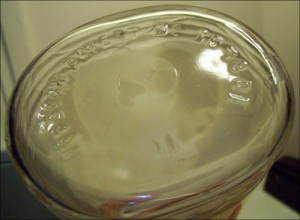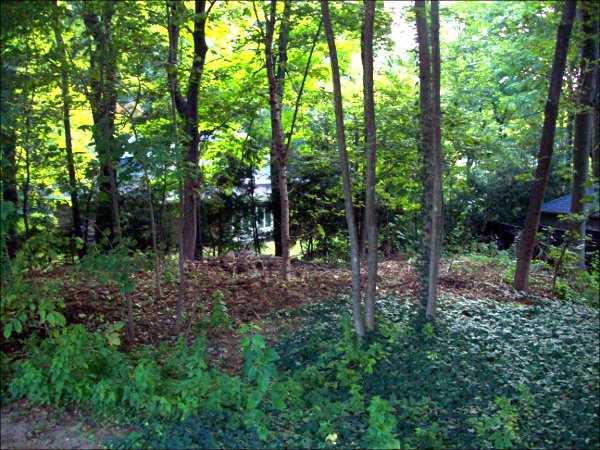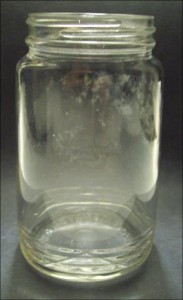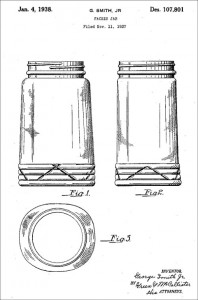The very back of our property is a small woodlot. While most of our land is level or gently sloping, the woodlot’s terrain is uneven and lumpy, as if the trees and vegetation grew on top of piles of trash. As it turns out, this may be exactly what has happened. Spending just a few hours digging into a 2′ x 2′ section of the soil has already uncovered at least 50 pounds of glass from broken bottles and jars. Some are still fully intact, like the one picturted to the right.
The bottom of this unbroken jar has raised characters saying, “DESIGN PATENT No 107801″ as shown in the closeup image below.
 As defined by Wikipedia, a design patent “is a patent granted on the ornamental design of a functional item.” In hopes of learning more about when the glass might have been buried in our backyard, I searched the Google patent archive.
As defined by Wikipedia, a design patent “is a patent granted on the ornamental design of a functional item.” In hopes of learning more about when the glass might have been buried in our backyard, I searched the Google patent archive.
When searching for a typical patent in the Google archive, you just enter the numeric patent (e.g. “54321”) to find records of that invention. When searching for a design patent, however, you need to prefix the patent number with the letter “D”. So, searching for “D107801” returned the following “Design for a Packer Jar” patent record filed on November 11, 1937, and accepted on January 4, 1938.
The three ridges broken by a zig zag diagonal ridge at the bottom of the patent design drawing match the actual ornamentation of the jar from our woodlot — it’s a match!
This design patent was filed by George Smith, Jr., “residing at Olean, in the county of Cattaraugus and State of New York, U. S. A.” in his capacity as “assignor to Olean Glass Company” a corporation also based in Olean, NY.
This suggests that my jar is no younger than 1938, and, since the term of the patent is 7 years, it was probably bought by former inhabitants of our property at some point during the early 1940’s. Could there be a connection between dumping used jars in the backyard and World War II?



